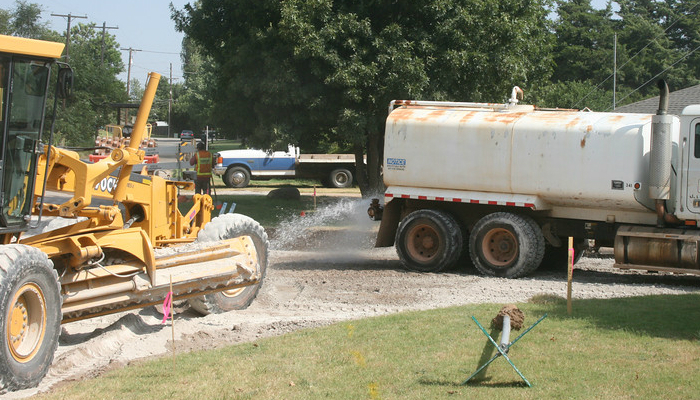Oklahoma Transportation Center
“PI: Jerry Miller (OU)“
“co-PI: Amy Cerato (OU) K.K. Muraleetharan (OU)“

Pressuremeter Test (PMT), and Marchetti Flat Plate Dilatometer Test (DMT), for example, are increasingly being used in geotechnical engineering practice in the United States to estimate soil property profiles. In Oklahoma, the Materials Division of the Department of Transportation (ODOT) has led the way in the use of in situ testing, and relies heavily on the CPT and DMT in practice. However, there has been very little work to develop methods for interpreting results of these tests when performed in unsaturated soil.
During a subsurface exploration, a zone of unsaturated soil is often encountered, sometimes extending to considerable depth. This is particularly true when tests are conducted through highway embankments. It is generally understood that the behavior of unsaturated soils is different from the commonly assumed saturated-undrained or drained soil behavior; yet there are no proven methods for interpreting in situ test results that account for these differences. A great deal of research has been devoted to the interpretation of these tests in cohesive and frictional soils; however, there are currently no reliable comprehensive methods for interpreting in situ test results from unsaturated soils. It is important to develop such methods because the in situ test results in unsaturated soil will depend on the moisture conditions at the time of testing. If these conditions change, as they frequently do in near surface soils, the interpreted soil properties may not reflect the soil behavior corresponding to the moisture conditions existing during construction or over the life of supported structures. The research proposed will build upon prior work of the investigators to develop a method for interpreting in situ test results in light of expected changes in soil moisture condition and suction.
Proposed work will involve conducting selected in situ tests at two test sites at least four times per year to investigate the influence of change in moisture conditions and soil suction on the test response. Test sites will be thoroughly characterized by a sampling and testing program with a special emphasis on defining the critical unsaturated soil properties and moisture content profiles. Additionally, test sites will be instrumented to monitor weather and soil moisture content at various depths. The analysis of results will have two major components, one to model the temporal changes in moisture content and soil suction as a result of climate changes and one to model the influence of changes in moisture content and soil suction on in situ test results.
A primary goal of this research is to gain important knowledge about the influence of matrix suction on in situ test results. In accomplishing this goal, a valuable set of experimental data will be established in an area of soil mechanics where information is scarce. Analytical and numerical models will be used to enhance the development of a theoretical framework for interpreting in situ test results obtained in unsaturated soils. This will allow engineers to make reasonable predictions of soil properties at moisture conditions other than those that exist when the in situ tests are performed.
Completed research will have a positive impact on geotechnical practice related to transportation corridors. In short, engineers will be able to better design slopes and reduce costly maintenance associated with slope failures. Additionally, the research will positively impact the careers of at least 2 graduate students and two undergraduate students. The geotechnical group at OU has a rich history of recruiting and supporting domestic underrepresented minority students. In line with the diversity go ale of the OkTC, we will aggressively recruit students from this group for the proposed work.